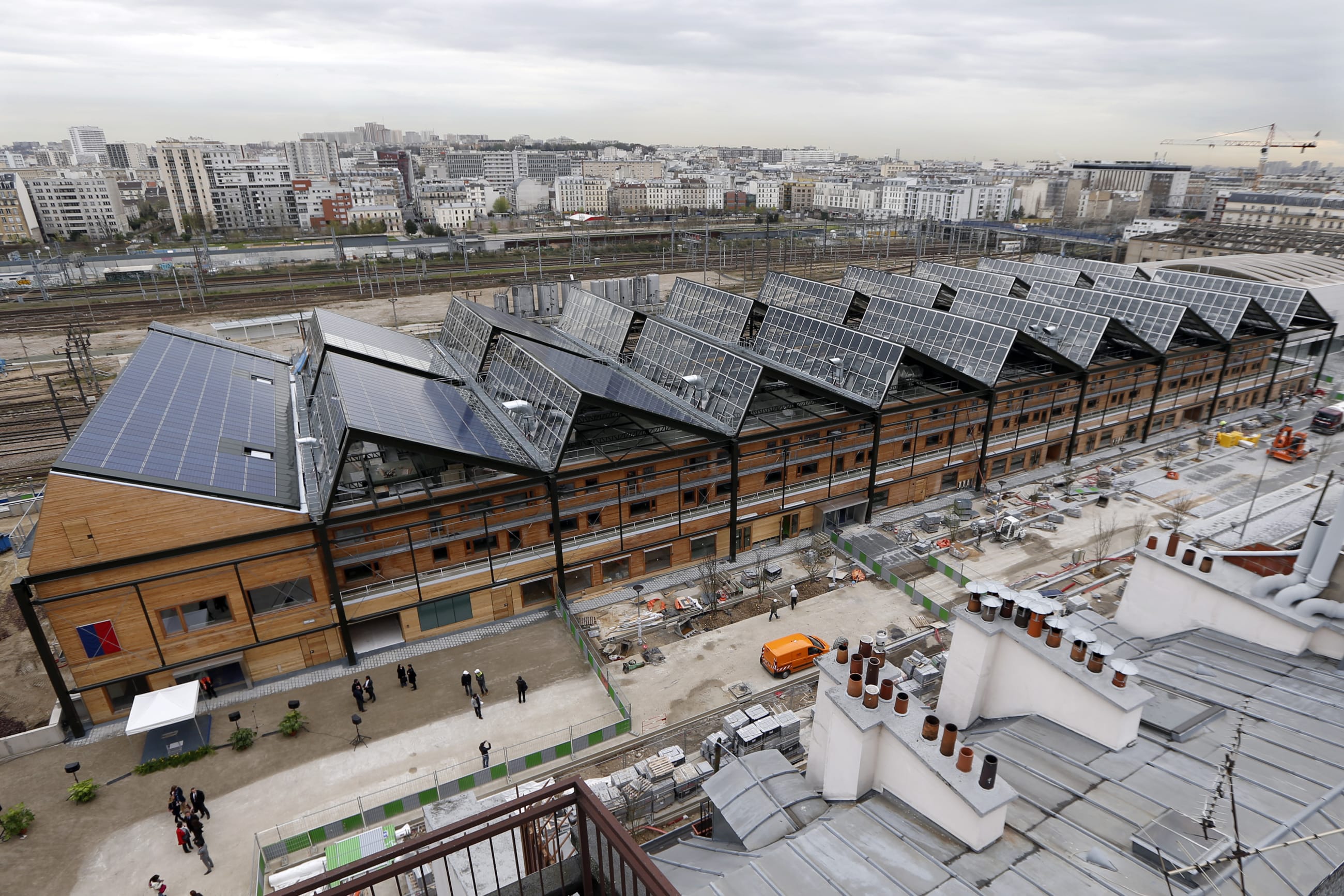Over millions of years, Earth developed an atmosphere and hydrosphere that enabled life to start and diversify. Powered by the sun, the varied species joined stones, lava flows, and water in seeding and shaping the planet's rocky surface and oceans. Over eons, Earth evolved a complex system obeying the rules of thermodynamics that provides stability for life forms as distinct as algae, trees, microbes, and humans.
As climate change and biodiversity loss demonstrate, humans have achieved the ability to transform Earth in ways that are knocking the planet's natural systems out of balance. The planet will cope with such impacts and keep hosting life. Through Earth's adaptation to anthropogenic disruptions, however, people are experiencing more frequent, powerful, and damaging impacts on their livelihoods attributed to climate change than before the industrial revolution.
Humanity needs to learn how to live on Earth without harming itself. Many efforts are under way to address the climate crisis by reducing the use of fossil fuels by harnessing technological innovations, including solar, wind, and geothermal energy.
An alternative approach involves learning from Earth's thermodynamics to develop healthier societies and ecosystems through more adapted infrastructure. Those lessons, translated through One Health, can inform the use of regenerative infrastructure around the world. City diplomacy can advance the need and know-how for such infrastructure, particularly through its connective work and positive advocacy on climate change, pollution, and biodiversity loss.
Nature's Energy and Resource Efficiency
Ecosystems have achieved stable organism and planetary balances by dissipating solar energy through growth, production, and reproduction. Natural systems often use repeating patterns and branching networks to collect, spread, and consume resources quickly and evenly, as, for example, tree branches and blood vessels do.
Humanity needs to learn how to live on Earth without harming itself.
The purpose, power, and efficiency of such repeating branching patterns are captured in the concept of fractals—the minimal infrastructure needed to access a volume of space evenly. According to Benoit Mandelbrot, the abundance of fractals in nature reflects a "regulated roughness" emerging from the sustainable management of solar energy by living things and nonliving forces on Earth.
Nature is also efficient because it does not produce waste. Natural organisms degrade waste locally, and other cells or organisms consume it as a resource. Such localized recycling reflects a biochemistry that builds diversity of life from a small number of molecules that have multiple binding sites. Those biochemical building blocks and processes produce efficient energy consumption because the processes need little to degrade, transport, and recycle waste.
Humanity's Energy and Resource Efficiency
Before the industrial revolution, human societies grew by harnessing solar energy through sails, traction power from animals, or combustion of plants. The use of fossil fuels has allowed humanity to create more extended internal and external networks that have different repeating patterns, as seen in local and global transportation infrastructures. As a flexible energy source, fossil fuels have powered the proliferation of infrastructures that move and consume resources from fields, forests, and mines all over the world.
Industrialization and chemical innovation have produced useful, novel molecules. Many of those molecules, however, are not degraded or reused. Unproductive waste has accumulated and is damaging the atmosphere, biosphere, geosphere, and hydrosphere.
In contrast to well-established transportation and economic networks around the world, the fragmented and weak nature of global governance inadequately regulates the production and disposition of harmful outputs of human activities. Human institutions are not preventing, degrading, recycling, or disposing of waste in ways that are beneficial for individuals, societies, or ecosystems.

One Health and Regenerative Infrastructure
Climate change has become a global threat to the existence of humans, animals, plants, and ecosystems. As such, it has become a major concern for One Health, a policy approach that acknowledges that the health and well-being of animals, humans, and plants are interdependent. Under One Health, policies should pursue actions that create and sustain synergies between human and nonhuman ecosystems.
Rigorously applied, One Health policies can promote the health of animals, humans, and plants and generate positive synergies among those interdependent sectors. For example, One Health seeks to prevent zoonotic spillover in human populations by improving animal and ecosystem health. One Health approaches can build capabilities that function like an immune system for the human and nonhuman networks that connect the world.
One Health is gaining traction internationally. The Food and Agriculture Organization, United Nations Environment Program, World Health Organization, and World Organization for Animal Health cooperate to codify and operationalize the One Health strategy. The approach has achieved prominence in various policy and governance contexts, including intergovernmental negotiations on a pandemic agreement and nongovernmental collaborations (for example, the Wellbeing Economy Alliance).
The One Health vision opens possibilities for copying nature—biomimicry—in regulating human activities. The potential for regenerative infrastructure can be advanced by designing and operating infrastructure that is interdependent with the natural environment. Such approaches can range from self-healing concrete to building networked renewable energy infrastructures.
The regenerative concept of the circular economy mimics how natural organisms identify, degrade, reuse, or recycle materials. The successful use of biomimicry in technology development also highlights the potential to use One Health to shift standalone and networked infrastructures toward producing only waste that, as much as possible, societies use locally in productive activities, including urban agriculture and construction.
In addition to minimizing and locally managing waste, regenerative infrastructure looks to restore natural resources and ecosystems locally and globally. Those aims require reducing the local and global harms caused by the industrial economy by using nature's ability to recycle and reuse many materials.
Regenerative Infrastructure and City Diplomacy
In theory, regenerative infrastructure's potential is relevant for many policy sectors, diplomatic activities, and global governance mechanisms. In practice, cities have been leaders in improving urban health and resilience through regenerative infrastructure. That phenomenon is important because most of the world's population now lives in urban areas, which creates opportunities to make urban infrastructure more fractal, finely branched, and independent of fossil fuels.
Advancing regenerative infrastructure in cities around the world is part of urban governance reform stimulated by city diplomacy
Advancing regenerative infrastructure in cities around the world is part of urban governance reform stimulated by city diplomacy over recent decades. City diplomacy efforts and networks help cities address shared local and global problems. For example, city diplomacy can support a partner city's efforts to manage urban water scarcity. The support can include financial and technical assistance for obtaining emergency water supplies and overhauling a city's water infrastructure to avoid future water crises. Such collective action also generates new commitments, ideas, opportunities, and policy learning [PDF] among urban politicians and community leaders taking part in city diplomacy.
Getting More Fractal Governance Faster
The growth of interest in regenerative infrastructure within cities and through city diplomacy shows that local and global governance mechanisms can productively implement policies that echo how natural systems that evolved over millennia support life on Earth. Fractal thinking can fill the conceptual and practical space between global and local governance actions and support the mantra "think globally, act locally." A fractal governance strategy differs from traditional diplomatic approaches to global health and environmental protection, approaches that have not delivered sufficient progress, especially concerning climate change.
Biomimicry, One Health, and regenerative infrastructure become, however, exponentially more difficult if human activities breach planetary boundaries, such as disrupting freshwater cycles with greenhouse gas emissions. The dynamics of such phenomena are complex and nonlinear, which makes dangerous trajectories difficult to predict. Sudden tipping points could occur that would require enormous resources to stabilize and reverse. The Montreal Protocol on Substances that Deplete the Ozone Layer is an example that preventing such tipping points is possible.
The prospects for similar treaty-based progress on climate change look bleak because of geopolitical competition between major countries, the power of private-sector actors, and the recently announced U.S. withdrawals from the World Health Organization and the Paris Agreement on Climate Change. Even so, the movement for more fractal governance within and among societies should harness the momentum for One Health and regenerative infrastructure that is building among health experts and urban leaders and within city diplomacy.

EDITOR'S NOTE: This article is part of a series exploring urbanization and global health, guest-edited by Evelyne de Leeuw.












